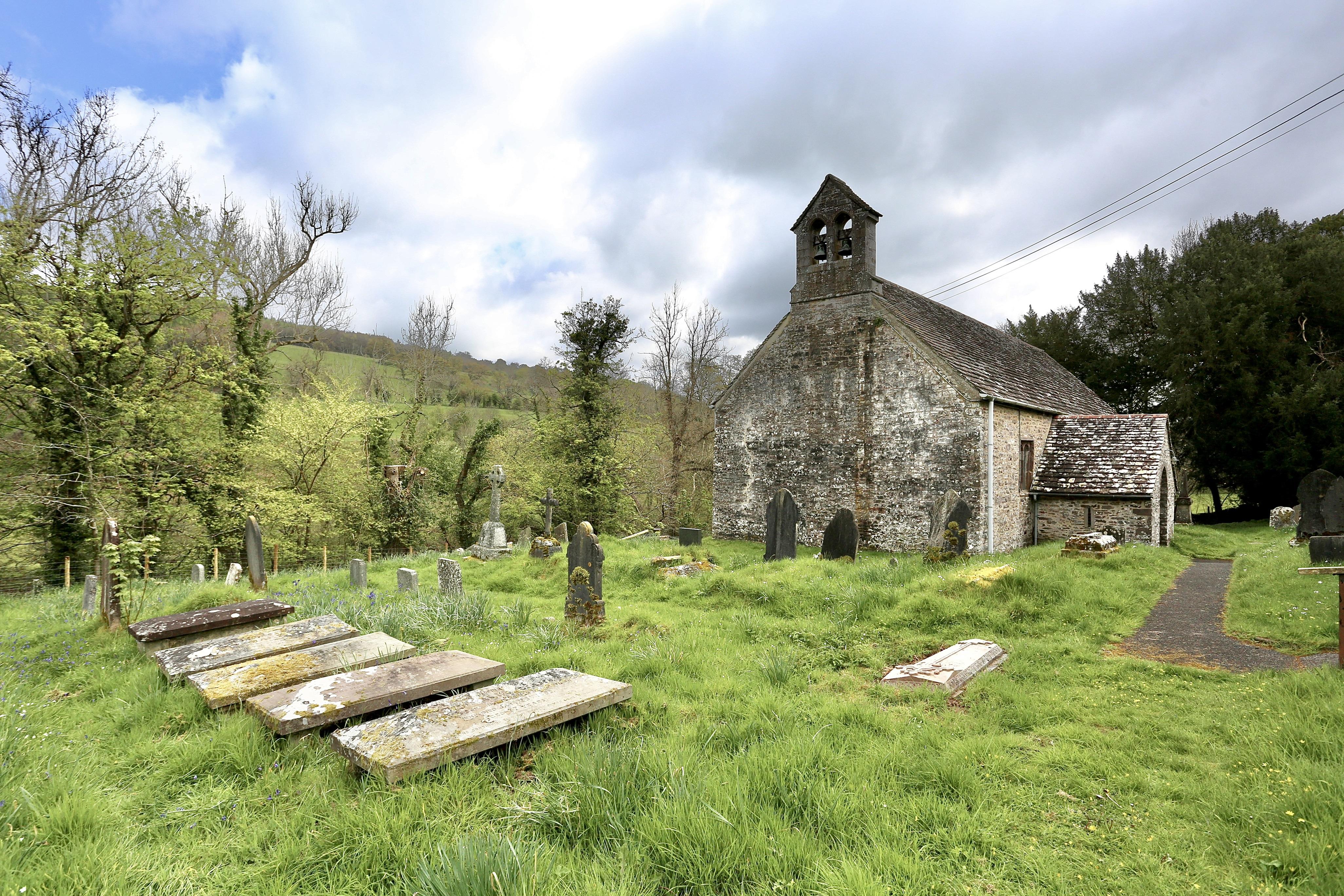St Paulinus
Llangors, Powys
The first record of a church in Llangors comes from 1152, and its early medieval roots are revealed in its curved churchyard and location beside a stream, both common in early medieval foundations in Wales.

Picturesque late medieval church and churchyard uniquely located on the banks of the River Usk and adjacent to the Monmouthshire and Brecon Canal in the heart of Bannau Brycheiniog National Park in Wales.
Llandetty, Powys
Reputedly founded in the early 6th century by St Detyw, grandson of Brychan, King of Brycheiniog, St Tetti's church is located in the tiny hamlet of Llandetty, in between the pictureque villages of Talybont on Usk and Llangynidr.
The present church probably dates from the 13th century and has a simple single bodied nave and chancel typical of Welsh medieval churches. The church building is Grade II* listed as a particularly important example of a late medieval church retaining much of its historic fabric.
Key points of interest are the 9th century Llandetty Stone, an inscribed square pillar stone in the blocked recess of the priest’s door in the chancel, the 13th century octagonal font and an 18th century wall painting of the Royal Hanoverian coat of arms showing the king’s authority over church.
The churchyard is an early Celtic site with a peaceful and attractive setting above the River Usk. Known for its daffodils and bluebells in spring and three notable yew trees (two by old lychgate) it contains headstones, slabs and monuments dating from the 17th century, three of which are Grade II listed. Two areas of the churchyard, under British Legion care, contain the graves of 310 ex-servicemen who were resident at the Legion’s nearby Crossfield (now Buckland) House. Many were veterans of two World Wars and died from war wounds. These areas form a unique War Grave in Britain. The graves have no headstones, just one single monument.
Fun fact: During the Commonwealth (1649 - 60), a local Colonel Jenkin Jones became a Puritan convert and ousted the incumbent priest Lewis Awbry from Llandetty Church and its parsonage. Jones installed himself as local priest and used the church as a farm building. In 1660, on hearing that Charles II had returned to Britain to reclaim the monarchy, Jones allegedly rode off through the churchyard, firing his pistol at the church and making the bullet hole that is visible today in the Priest’s door - and never returned!
Llangors, Powys
The first record of a church in Llangors comes from 1152, and its early medieval roots are revealed in its curved churchyard and location beside a stream, both common in early medieval foundations in Wales.
Llanhamlach, Powys
Attractive village church, with parts dating back to the 15th century, overlooking the River Usk in the Brecon Beacons.
Llanfrynach, Glamorgan
Medieval wall paintings and tomb carvings in a church which has completely escaped modernisation.